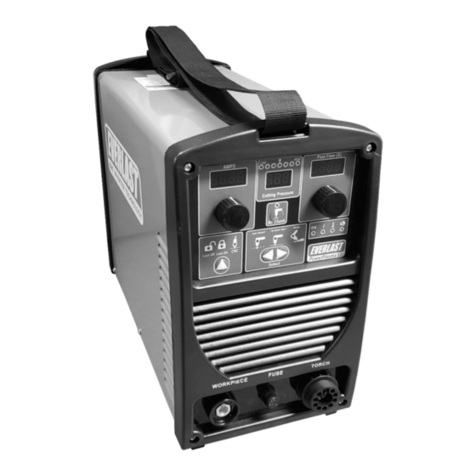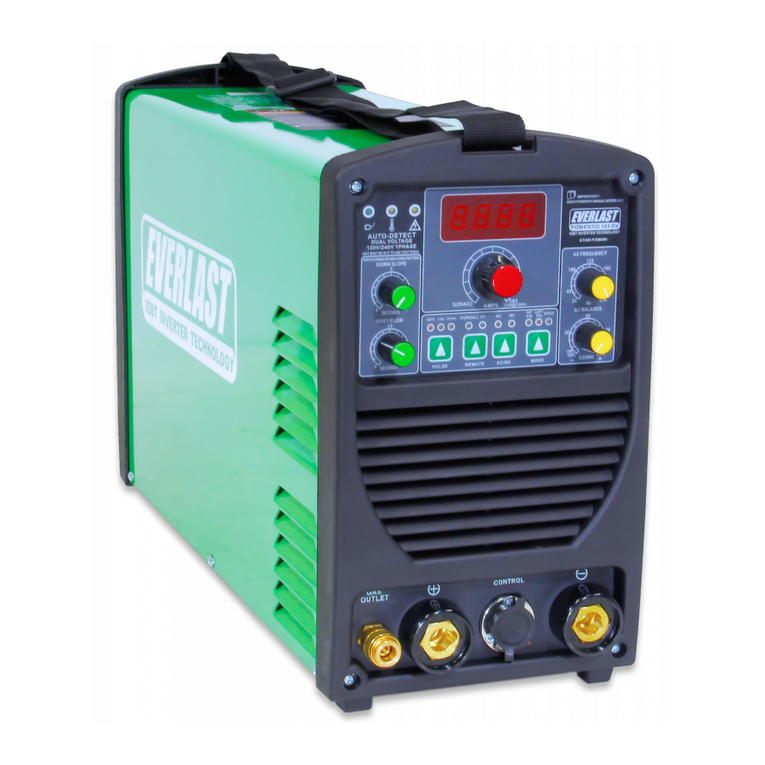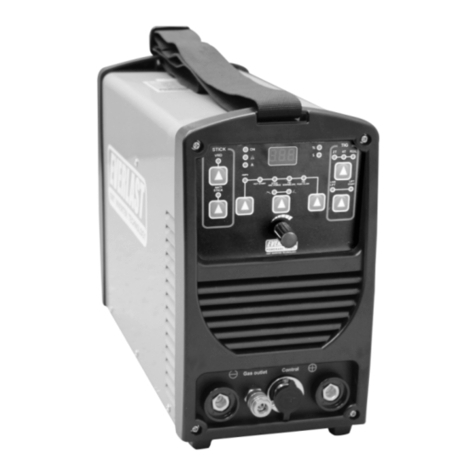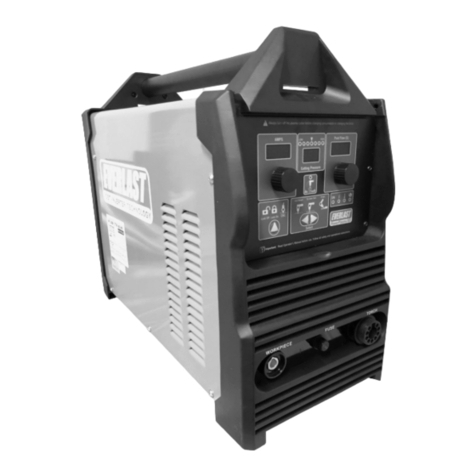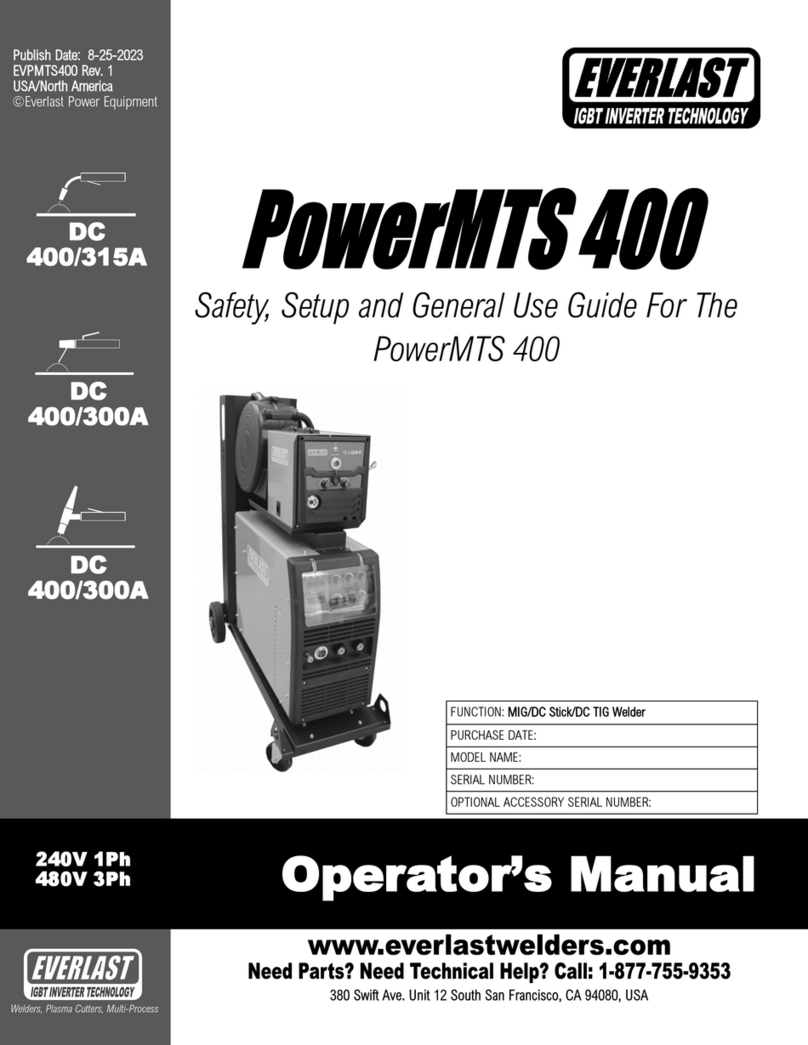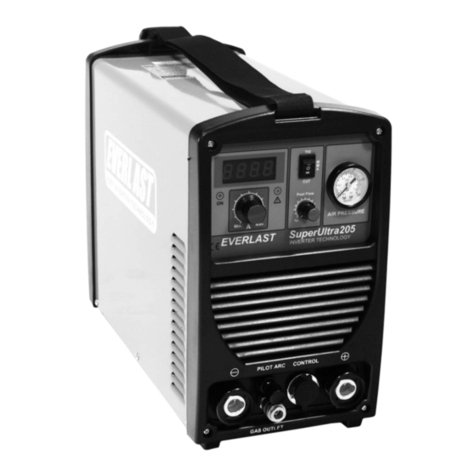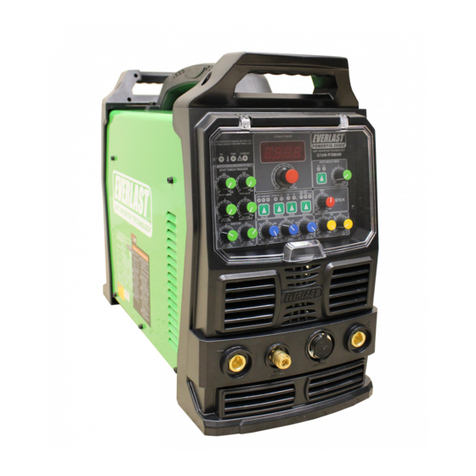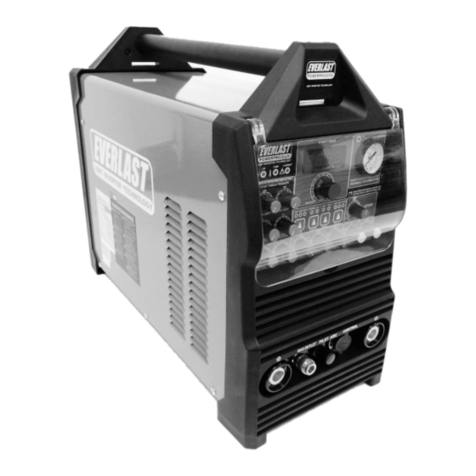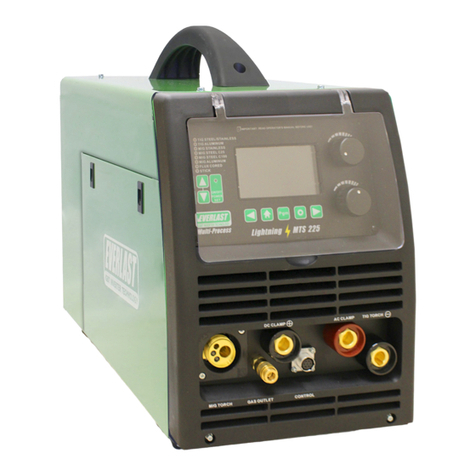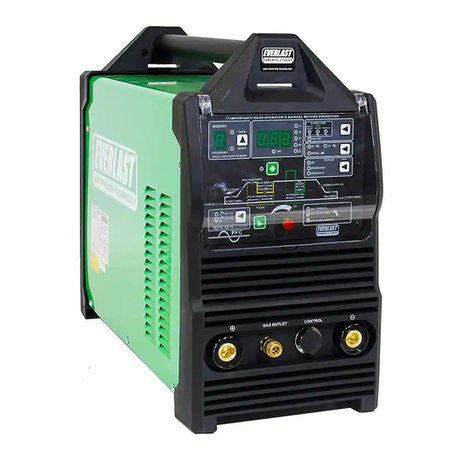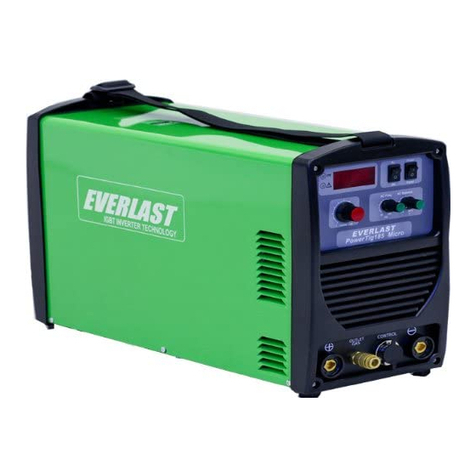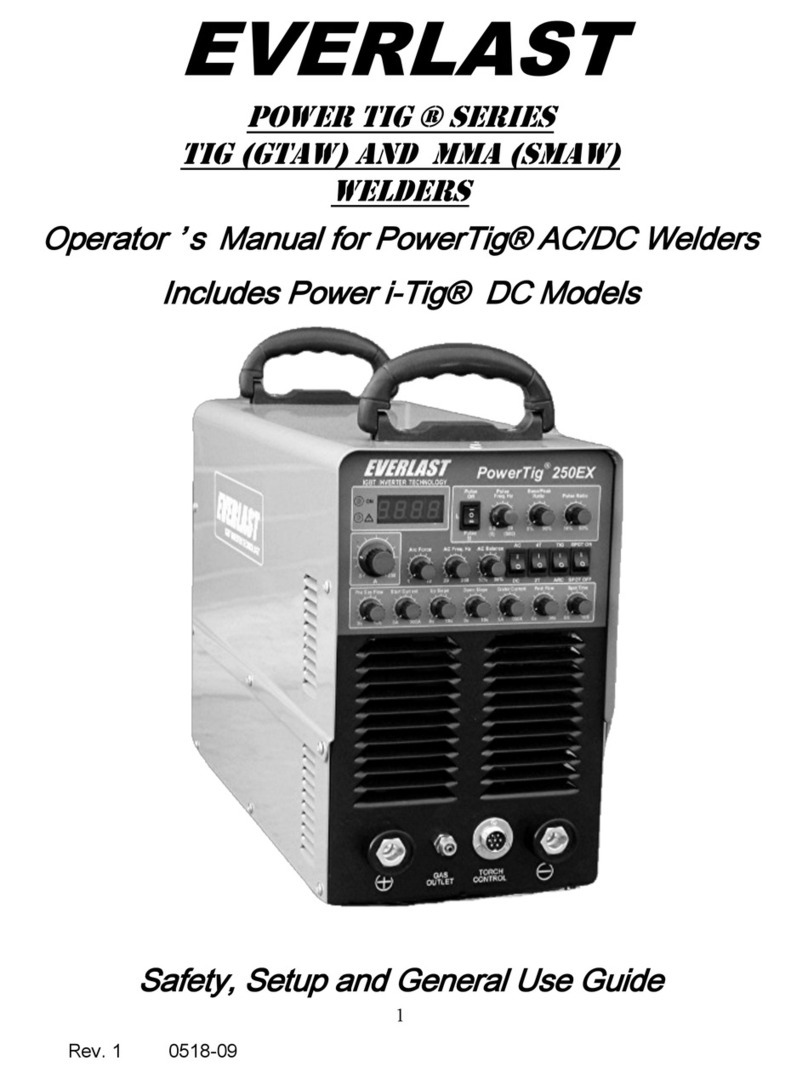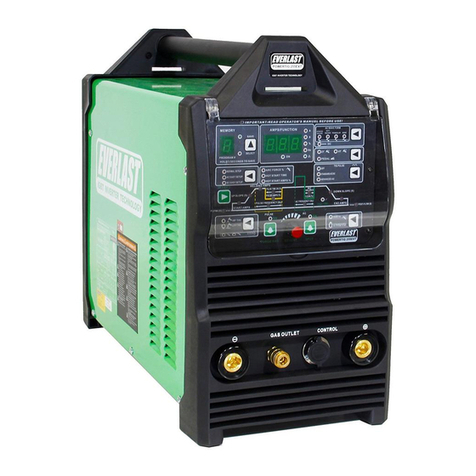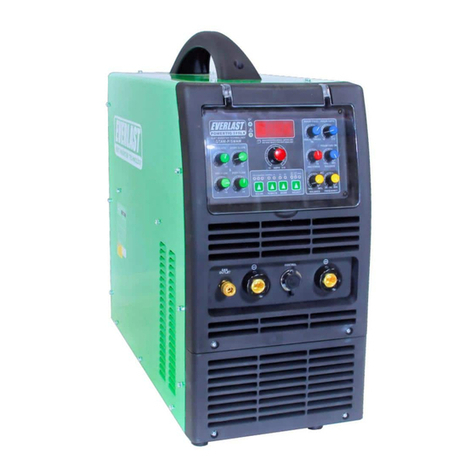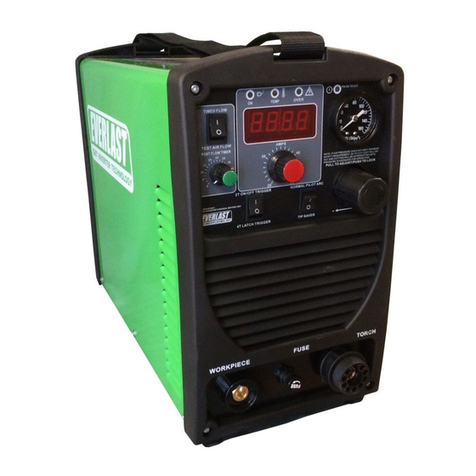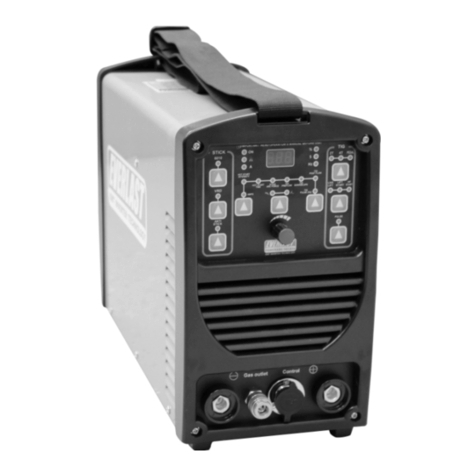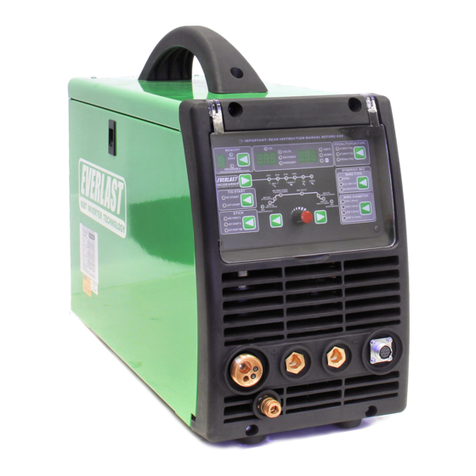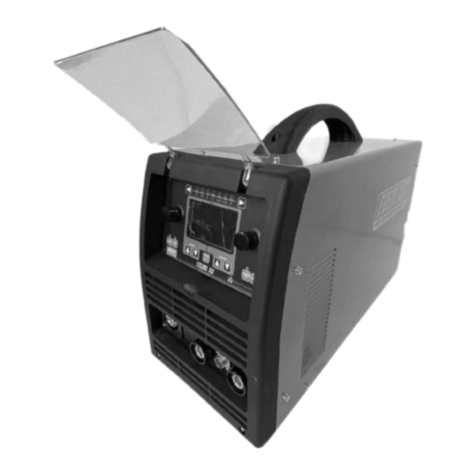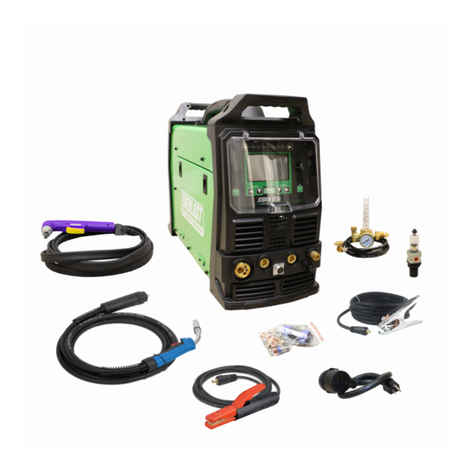10
Section 1 Introduction and Specifications
NOTICE:
This unit is DC output only and is not intended to be used for TIG welding Aluminum. This unit will weld with most welding electrodes (rods) in Stick mode, but it is not suitable for use
with E6010 electrodes. E6011 may be used, but performance may be brand dependent and not as good as with E7018 or any iron powder electrodes such as E7014 or E6013. The
plasma function on this unit is intended to be used in a support role for TIG and Stick welding and is not recommended to be used exclusively as a plasma cutter. Please be aware of
duty cycle limits while plasma cutting. Adjust plasma Amperage and consumable size according to the application used. This unit is not suitable for Plasma Gouging.
Use the I1MAX value to size the breaker. Use the I1EFF current to size wiring. Consult the NEC Article 630 for details concerning wiring and breaker requirements.
ULTRA-ARC 205 Specications
Inverter Type Digital IGBT (DC Output only)
Memory Settings Up to 9 possible memory slots
Minimum/Maximum Rated Output TIG 120V: 5A/10.2V-125A/15V 240V: 5A/10.2V-200A/18V
Minimum/Maximum Rated Output Stick 120V: 5A/20.2V-100A/24V 240V: 5A/20.2V-160A/26.4V
Minimum/Maximum Rated Output Plasma 120V: 20A/88V-25A/90V 240V: 20A/88V - 50A/100V
TIG/Plasma Start Type TIG: Live Lift/Lift/HF Plasma: Blow-Back Type
Torch Type and length TIG: 26 Series Air-Cooled 12.5 ft. Plasma: S-45 12 ft. Stick: 250A 10ft. Electrode Holder
TIG Duty Cycle @ Max Rated Amps/Volts (40 C) (Output A/V) 120V: 60% @ 125A/15V 240V: 60% @ 200A/18V
Stick Duty Cycle @ Max Rated Amps/Volts (40 C) (Output A/V) 120V: 35% @ 100A/24V 240V: 35% @ 160A/26.4V
Plasma Duty Cycle @ Max Rated Amps/Volts (40° C) (Output A/V) 120V: 35% @ 25A/90V 240V: 35% @ 50A/100V
TIG Start/End Amps 5-200A
TIG/Plasma Pre/Post Flow Time Pre: 0-10 Seconds Post: 0-50 Seconds (Plasma 0-50 Seconds Post Flow Only)
TIG Upslope/Down Slope Time Up: 0-10 Seconds Down: 0-10 Seconds
TIG Pulse Frequency: .1-150Hz
TIG Pulse Time On/ Pulse Amps: P-TIG 1, P-TIG 2, P-TIG 3 Fixed. Time On/Pulse Amp values set @ P-TIG 1: 50% / 50%, P-TIG 2: 65% / 65%, P-TIG 3: 75% / 35%
Spot and Fast Tack Time .1– 15S
Stick Hot Start % 0-100%
Stick Arc Force % 0-100%
E6010 Capable No
OCV (U0) TIG/Stick/Plasma TIG: 70V Stick: 70V Plasma: 250 V
Voltage Input (U1) Dual Voltage: 120V/ 240V; 50/60Hz 1 Phase (±10%)
Maximum Inrush Amps (I1MAX) 120V: 30A 240V: 28A
Maximum Rated Effective Amps (I1EFF) 120V: 19A 240V: 18A
Air Post Flow Timer Adjustable, 0-50 Seconds
Air Compressor Requirement and Recommendations for Plasma Cutting. 4.5 - 5 CFM @ 90 PSI (127-142 lpm @ 6.2 bar)
Use a compressor with a minimum output of 5.3 CFM @ 90PSI (150lpm @ 6.2 bar), with 30 gallon (114
Liter) capacity or higher recommended for best operation. Pancake type and small oil-less compressors
are not suitable.
Duty Cycle/ Over Current Protection Yes, Self-diagnosing feature. (See code references at the end of this manual.)
Minimum Operating Plasma Cutting Air Pressure Approximately 40 PSI (2.7 bar) (safety cut-out threshold)
Low Pressure indicated by Error Code E06.
Maximum Supplied Air Pressure 90 psi (This is incoming pressure from the air compressor, not operating, or (From Compressor/Tank)
cutting pressure.) The air compressor MUST have a separate pressure regulator at the tank or inline to
control maximum supply pressure.
Recommended Maximum Daily Average Cut Thickness (Steel) 3/8” (12mm) Decrease 35-40% for Aluminum and Stainless (INOX).
Rated Maximum Quality Cut @ 10-12 IPM (@ 250-300mm / min) (Steel) 5/8” (18mm) Decrease 35-40% for Aluminum and Stainless (INOX).
Max Severance Cut @ 3 IPM (75mm / min) (Steel) 7/8” (22mm) Decrease 35-40% for Aluminum and Stainless Steel (INOX).
Minimum Water Ingress Protection Standard IP21S
Efciency >85%
Cooling Method Full time High Velocity Fan
Dimensions (approximate) 12.5” H x 7.5” W x 14” L (320mm x190mm x 355mm)
Weight (Bare Unit) 44 lbs. (20 kg)
Generator Requirement 7,500 W Clean Power (<5% total harmonic distortion/Clean Power Output Rated)
Minimum Storage/ Minimum Operating Temperature Storage: -10°F/-23°C Operating: 14°F/-10° C
HF Point Gap (TIG) .029” to .045” (Target Point Gap: .035”)
